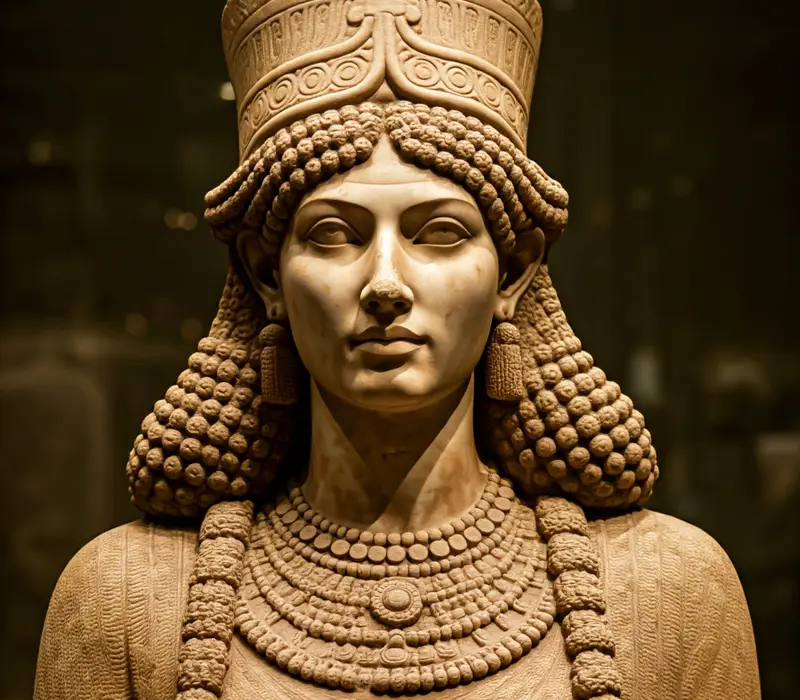Semiramis: The Legendary Assyrian Queen Who Ruled an Empire

Semiramis, often depicted as a powerful queen and military leader, remains one of the most fascinating figures in ancient history. Her legacy is steeped in both historical records and mythical tales, blending fact with legend. Known as Sammuramat in Assyrian records, she was the wife of Shamshi-Adad V (reigned 823–811 BCE) and the mother of Adad-Nirari III (reigned 810–783 BCE). Following her husband’s death, she ruled as regent on behalf of her young son, demonstrating remarkable political prowess in a period when women rarely held positions of power. explores the life, achievements, and mythology surrounding Semiramis, focusing on her influence within the Assyrian Empire and the architectural wonders attributed to her.
---
Semiramis: The Historical Queen
Sammuramat’s Rise to Power
Semiramis, or Sammuramat, became queen through her marriage to King Shamshi-Adad V, a ruler of the Neo-Assyrian Empire. When the king died in 811 BCE, Semiramis assumed the role of regent until her son, Adad-Nirari III, reached the appropriate age to take the throne. In a society that traditionally restricted female leadership, Sammuramat’s position was exceptional, suggesting she possessed extraordinary strength and political skill.
Her reign as regent was marked by a significant influence over court politics, evidenced by her presence in inscriptions alongside her son. Assyrian chronicles mention that she governed the empire, maintained the stability of the realm, and played a vital role in managing internal and external affairs during a turbulent time in Assyria’s history.
---
Assyrian Politics and Semiramis' Influence
As queen regent, Semiramis secured her son’s future reign by solidifying alliances and managing the empire’s military campaigns. Although detailed records about her specific policies are scarce, the fact that her name appears in royal inscriptions indicates the respect and power she commanded. This influence suggests that her presence at court was not merely ceremonial but vital for the functioning of the empire.
Her ability to hold power in such a male-dominated society indicates that Semiramis was an exceptional leader. The few Assyrian women who achieved political authority were usually those with immense personal influence, and Semiramis stands out as one of these rare figures.
---
The Myth of Semiramis
Origins: Saved by Doves
One of the most captivating elements of Semiramis’ story lies in the myth surrounding her origins. According to legend, she was an abandoned infant saved by doves. The birds brought milk and cheese from a nearby village to nourish the baby, keeping her alive during a harsh period. Eventually, local farmers, noticing the disappearance of their dairy products, discovered the child beside a lake, surrounded by the doves that had protected her.
This mythical narrative paints Semiramis as a figure destined for greatness, chosen and nurtured by nature itself. The theme of doves—symbols of peace and divine favor—emphasizes her uniqueness and hints at her future role as a leader with divine connections.
---
Military Conquests and Expansion
The legends of Semiramis extend beyond her origins, portraying her as a formidable military leader who expanded her empire through conquests. Although historical sources do not confirm all the battles attributed to her, later writers, especially Greek historians, emphasized her martial prowess.
In the mythic accounts, Semiramis led campaigns across the region, conquering distant lands and bringing new territories under Assyrian control. These tales, though likely exaggerated, reflect the admiration and awe that later generations had for her leadership and military strategies.
---
Architectural Achievements: Building Babylon
Founding of Babylon
Semiramis’ reputation as a builder is one of the most enduring aspects of her legacy. According to tradition, she is credited with the founding of Babylon, one of the most iconic cities in ancient Mesopotamia. While historians debate the extent of her involvement in Babylon’s construction, the stories emphasize her role in designing and beautifying the city, reflecting her vision for urban development.
---
Palaces and Protective Structures
Semiramis is said to have constructed two grand palaces in Babylon, connected by an underground tunnel. These architectural marvels demonstrated her foresight and innovation, as the tunnel allowed safe passage between the palaces in times of conflict. Additionally, she built protective barriers along the Euphrates River to safeguard the city from flooding.
Although the historical accuracy of these achievements is debated, these stories underscore Semiramis’ association with grand construction projects and urban planning, contributing to her lasting legacy as a visionary leader.
---
Legacy and Influence
A Model of Female Leadership
Semiramis’ story stands out in the history of the Assyrian Empire as a rare example of female authority. Her regency, though brief, had a lasting impact, showcasing the potential for women to hold power in one of the world’s most formidable empires. Her ability to navigate court politics and oversee military campaigns highlights her exceptional leadership qualities.
---
Influence on Later Cultures
The Greek reinterpretation of Sammuramat’s story as "Semiramis" added layers of myth and legend, influencing how later cultures perceived her. Her name became synonymous with power, ambition, and ingenuity, inspiring tales across the ancient world. The myths surrounding Semiramis continued to captivate historians, writers, and artists for centuries, contributing to her status as a semi-divine figure.